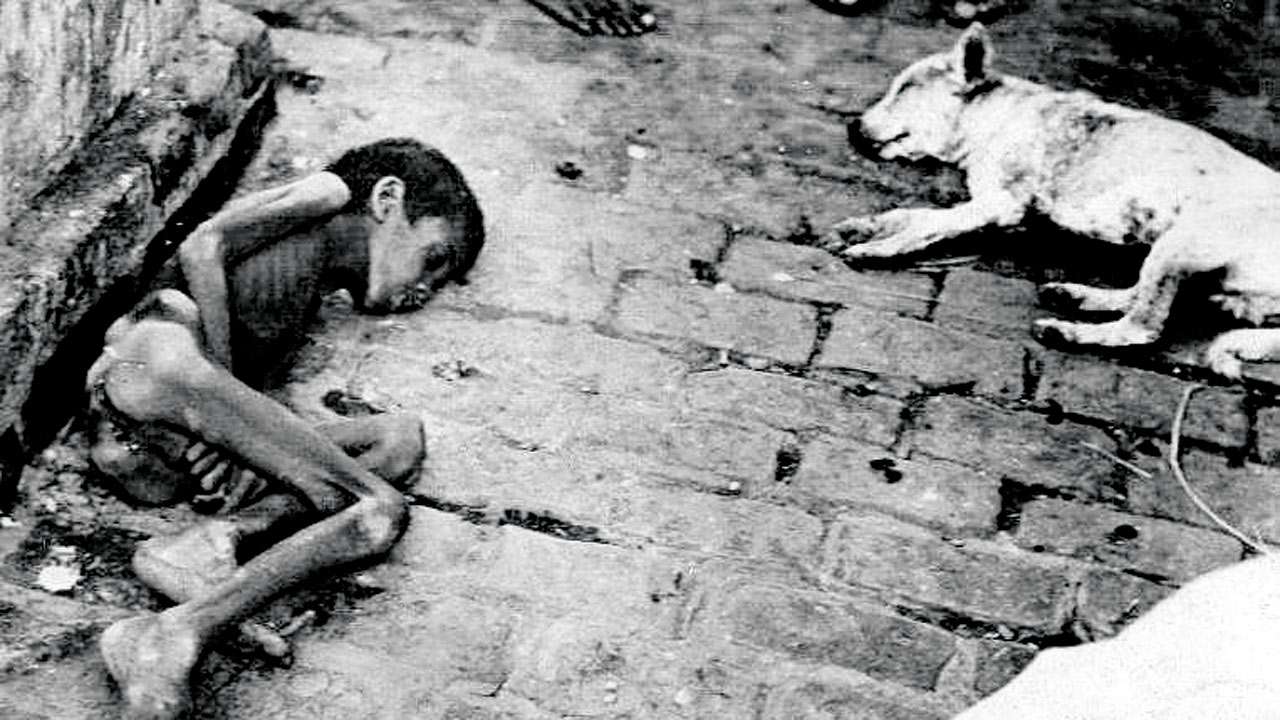
This year marks the 75th anniversary of the Bengal famine which took the lives of over three million people. Coming in the backdrop of World War II, the famine will be remembered throughout history by Indians for exposing the cruelty of the world revered statesman Winston Churchill. “Why hasn’t Gandhi died yet,” was Churchill’s response to a telegram from the government in Delhi informing London about the famine. For Churchill Indians lives didn’t matter as they didn’t vote and were “breeding like rabbits,” anyway.
This attitude of British cruelty and apathy could be seen that when even when the famine was at its peak and people was starving to death, the British administration exported thousands of tonnes of rice to war zones where the British and its allied armies were fighting, as well as to Britain. As per archival data, India exported more than 70,000 tonnes of rice between January and July 1943 which would have kept nearly four lakh people alive for a full year.
This was the last biggest famine before India’s independence in 1947 and due to vast scale of deaths and destruction it caused, it left a deep scar in the psyche of the leaders of the Indian Freedom movement and among the masses in general. Although, famines were not new to Bengal as the first Great Bengal Famine of 1770 wiped out more than 10 million people. There too the major reason was the exploitative economic policy of Britishers who were just settling in to become the masters of the Indian sub-continent.
Apart from the widespread loss of life the famine led to abject mass poverty. There are reports that some people were forced to eat grass as well as human flesh to survive. Children and women were severely affected. While the infant mortality rate peaked and children started dying due to starvation, women and young girls in particular were forced to enter prostitution in order to get money for food. It may even surprise many to note that the lives lost in this famine were much more than the lives lost during the Partition in 1947.
Despite these truths, colonial apologists blame the famine entirely on the poor harvests due to stagnant agricultural productivity in Bengal. It’s partly true that this was one of the reasons behind famine but the real reason was a result of the poor agrarian policies of British rule. Also, it is a myth to think that the famine was only throughout 1943. If looked at holistically it actually lasted for two years, starting in 1942 and ended in 1944.
The Bengal famine ends the myth that that the British were benevolent rulers. Coming in the days when the British Raj was standing on its last legs this “manufactured genocide” was a desperate attempt by the colonisers who wanted to rule the Indian sub-continent at any cost. This cost was paid for by millions of the native Bengali-speaking population.
The author is a junior research fellow at the School of International Studies, JNU. Views are personal.